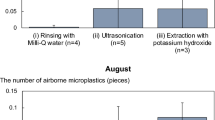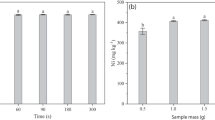Abstract
The use of neutron for Non Destructive Imaging (NDI) techniques has many advantages over other (NDI) methods. Using well-established X-ray imaging techniques can provide easy and direct results with some limitations where the sensitivity for light elements is very low. On the other hand, neutron is highly sensitive to water content and can provide extra qualitative information. Comparing the results of the two imaging techniques are investigated in this work with the aim of identifying the palm weevil. At larva stage of the weevil’s life it is characterized by highly water content in the trunk of the palm tree which itself composed of spongy watery texture in some types of palm tree. MCNPX 2.5.0 code with neutron radiography tally was used to obtain the 2D projection then reconstructed to 3D tomography image using OSCaR post processing package. The neutron and photon mesh tallies is utilized to study the neutron and photon fluences from monoenergetic thermal neutron beam and neutron spectrum. There are fundamental difficulties in neutron detection which result in misleading information arises from neutron scattering when constructing cone beam CT neutron images, however, neutron radiography provide better methods for the weevil detection from 2D projection.






Similar content being viewed by others
References
Aljhohany L (2010) Degradation of date palm trees and date production in Arab countries: causes and potential rehabilitation. Aust J Basic Appl Sci 4(8):3998–4010
Red palm weevil (Internet). http://www.redpalmweevil.com. 2011-03-11
Ma AKW, Alghamdi AA, Spyrou NM (2011) X-ray CT in the detection of palm weevils. Modern Trends in Activation Analysis (MTAA-13) Conference, College Station
Bray DE, McBride D (eds) (1992) Nondestructive testing techniques. Wiley-Interscience Publication, Canada
Pelowitz DB (2005) MCNPX TM user’s manual. Los Alamos National Laboratory, Los Alamos
OSCar [Internet] http://www.cs.utoronto.ca/nrezvani/OSCaR.html. 2011-03-11
Omotoso O, Adedire C (2007) Nutrient composition, mineral content and the solubility of the proteins of palm weevil, Rhynchophorus phoenicis f (Coleoptera: Curculionidae). J Zhejiang Univ Sci B. 8(5):318–322
NIST Physical Reference Data [Internet]. http://www.nist.gov/pml/data/index.cfm 2011-03-11
Grogan BR (2010) The development of parameterized scatter removal algorithm for nuclear materials identification system imaging. Doctoral Dissertations, The University of Tennessee, Knoxville
Author information
Authors and Affiliations
Corresponding author
Rights and permissions
About this article
Cite this article
Alghamdi, A.A. Monte Carlo simulation of neutron tomography for palm weevil detection. J Radioanal Nucl Chem 291, 359–364 (2012). https://doi.org/10.1007/s10967-011-1278-5
Received:
Published:
Issue Date:
DOI: https://doi.org/10.1007/s10967-011-1278-5




